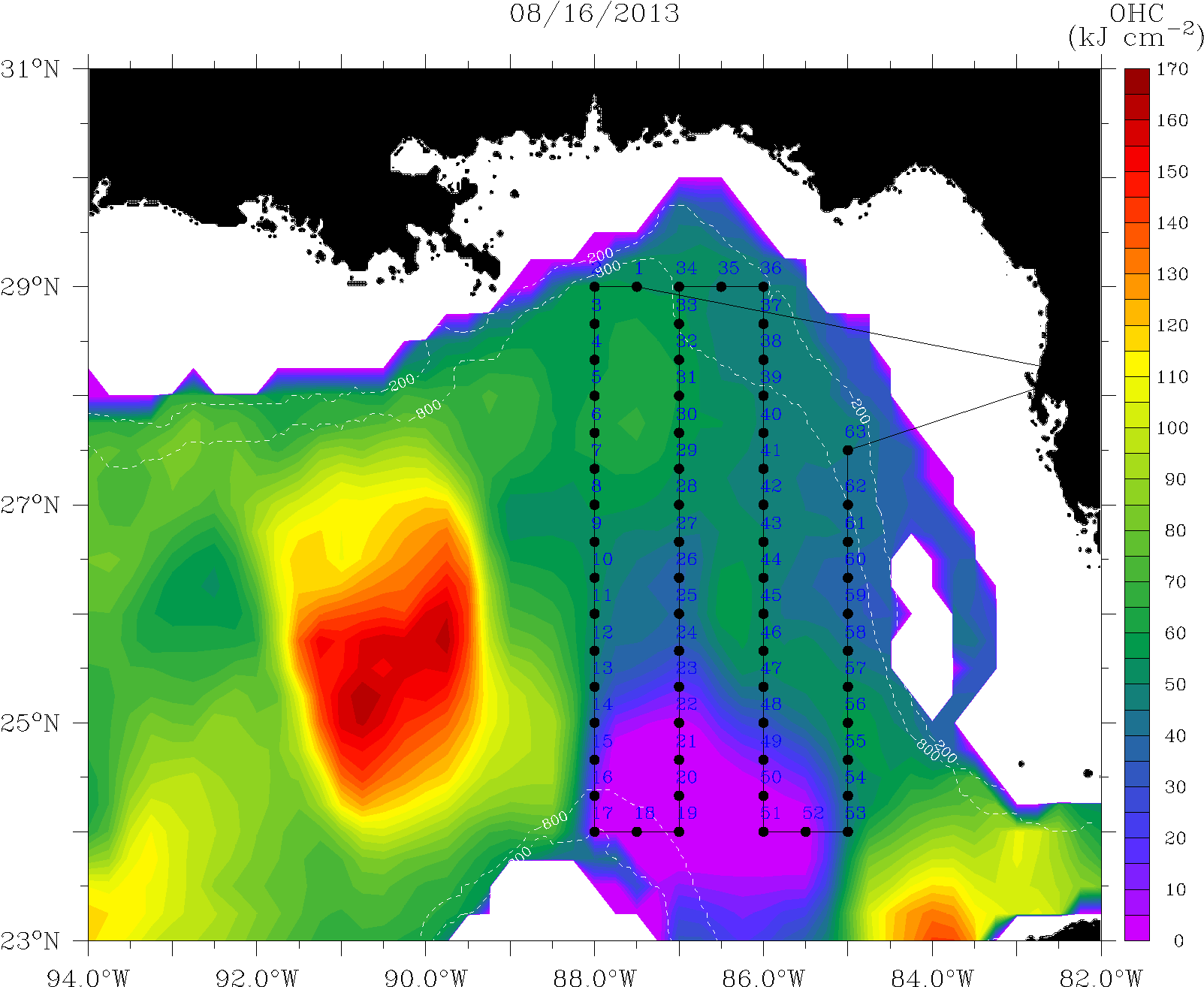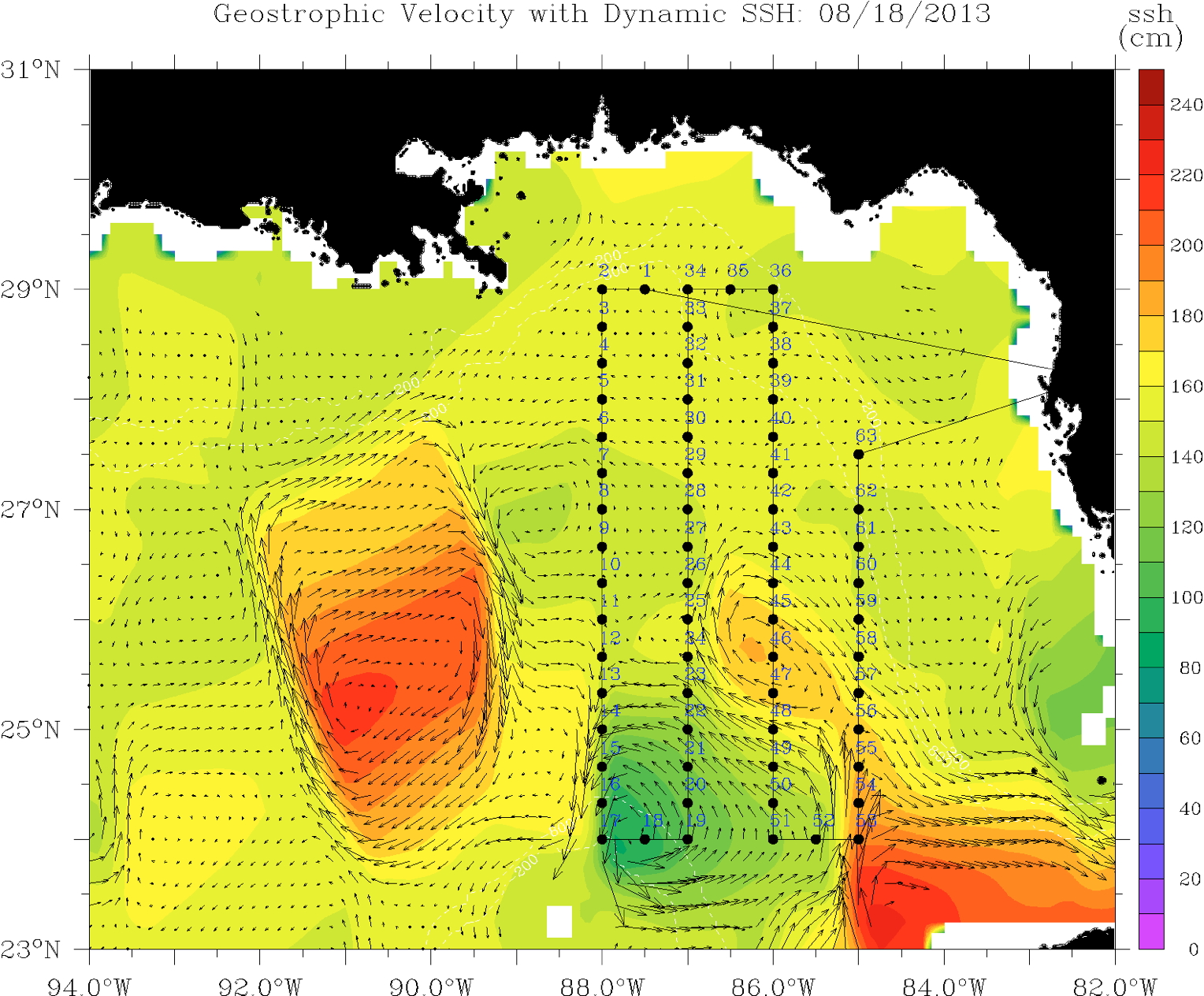
Figure 1. Proposed track
| Aircraft Commander | Mark Nelson |
| Co-pilot | Chris Kerns |
| Co-pilot | Matthew Nardi |
| Navigator | Pete Siegel |
| Flight Engineer | Paul Darby |
| Flight Engineer | Joe Klippel |
| Flight Director | Richard Henning |
| Data Technician | Stevn Paul |
| AVAPS | Dana Naeher |
| Electronics Technician | Todd Richards |
| LPS | Nick Shay (RSMAS) |
| AXBT | Claire McCaskill (RSMAS) |
| AXBT | Benjamin Jaimes (RSMAS) |
| Intern | Jonathan Belles (AOC) |
| Guest | John Jackson (Discovery Ch) |
| Guest | Keir Byatt (Discovery Ch) |
Mission Plan :

On Tuesday 20 August 2013, NOAA 43RF will carry out an Ocean Heat Content mission flying a grid pattern over the Loop Current (LC) area into the eastern Gulf of Mexico. The P-3 will leave MacDill AFB, FL 1300 UTC and will recover at MacDill AFB, FL by 2100 UTC the same day.
The experimental objective is to provide data over a large scale to measure a cold pool (cyclonic circulation) that developed over the LC region after an eddy-shedding event. The flight focused on temperatures, currents and salinity in a geographical location extending from 24°N to 29°N and from 85°W to 88°W (Figure 2). In addition, these measurements provide the important data to correlate to surface images and data from satellite measurements (oceanic heat content, oceanic mixed layer, and isotherm depths). From a scientific perspective, these data will be useful in improving our understanding of the complex circulation in the LC region after eddy shedding processes and the associated ocean modeling.
Mission Summary :
| Take off | Landing
| MacDill AFB, FL | 13:30 UTC
| MacDill AFB, FL | 21:17 UTC
| | ||
Takeoff time was ~0915 EST 20 August from MacDill United States Air Force Base and the flight duration was ~8.5 hours. During the mission, the aircraft was flown at about 5500 feet at an indicated air speed of 187 to 195 knots. We are maintaining 1/3° resolution along each meridional transect.

Figure 2: Flight track on 20 August 2013 from NOAA WP-3D aircraft.
Atmospheric dropsondes (for winds) and airborne ocean profilers sampling to as deep as 1500 m (from expendable current profilers) were deployed in a lawnmower style. In total, sixty-one airborne profilers were deployed of which there were forty-nine profilers that returned signals to the aircraft (~80.3%) that acquired data. Ten of twelve failures were associated with the AXCPs. For these failures, the AXCPs either did not turn on or release from the airborne canister similar to the problems encountered on previous flights. We had two bad AXBTs. Note that all fifteen AXCTDs returned signals to the aircraft.
Nick Shay
Sept. 10, 2013
Mission Data :
serial |
Flight Director's log